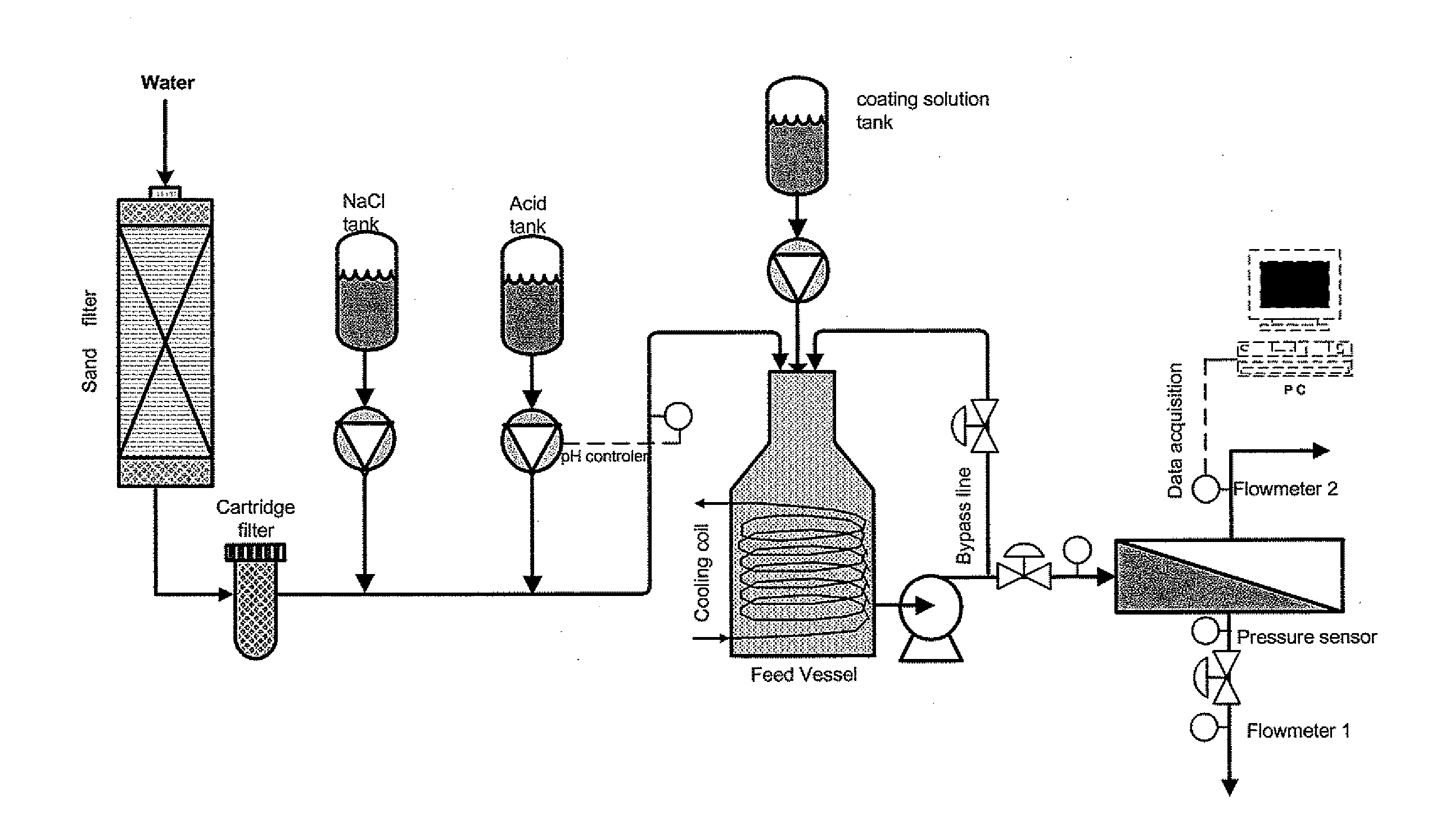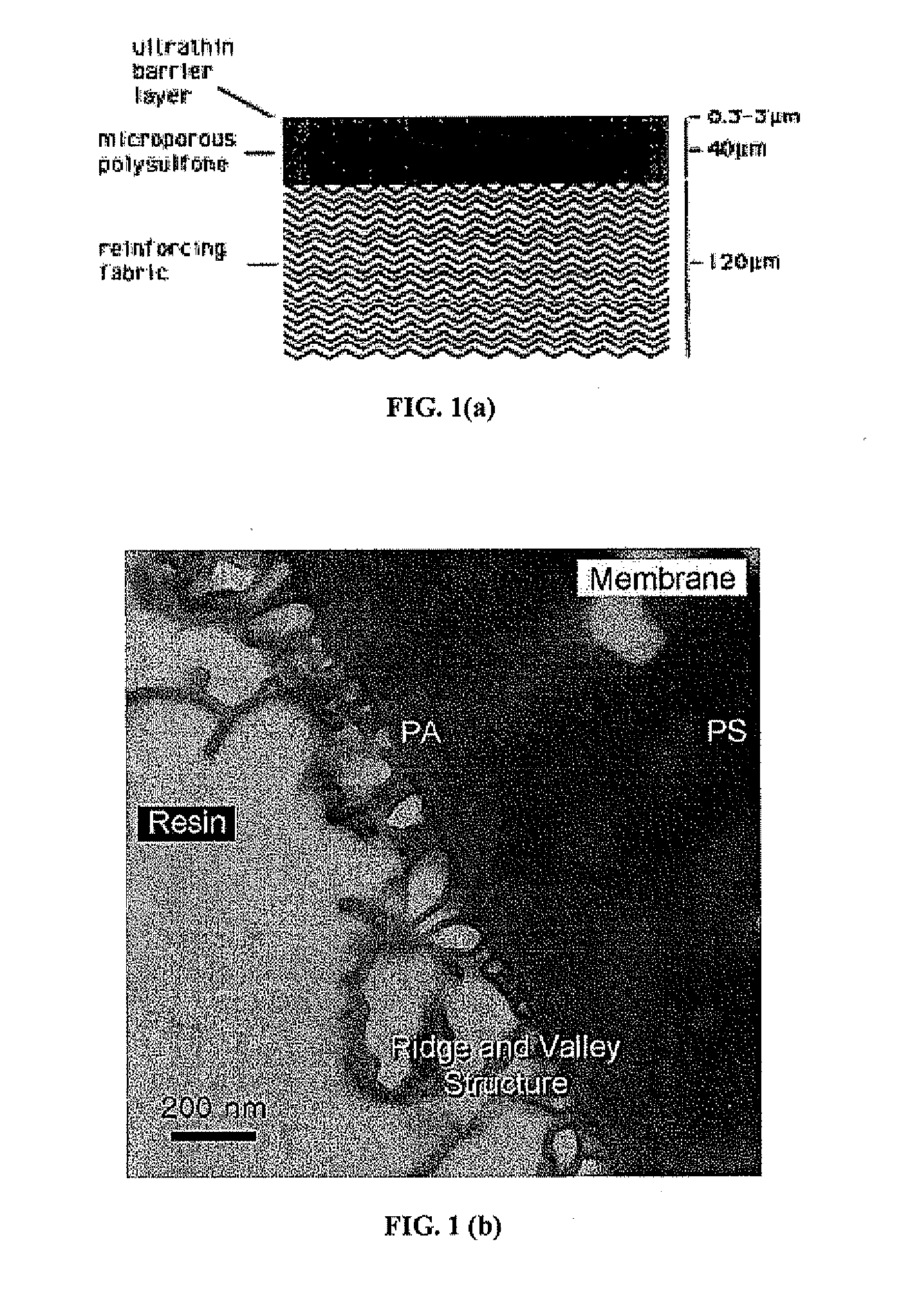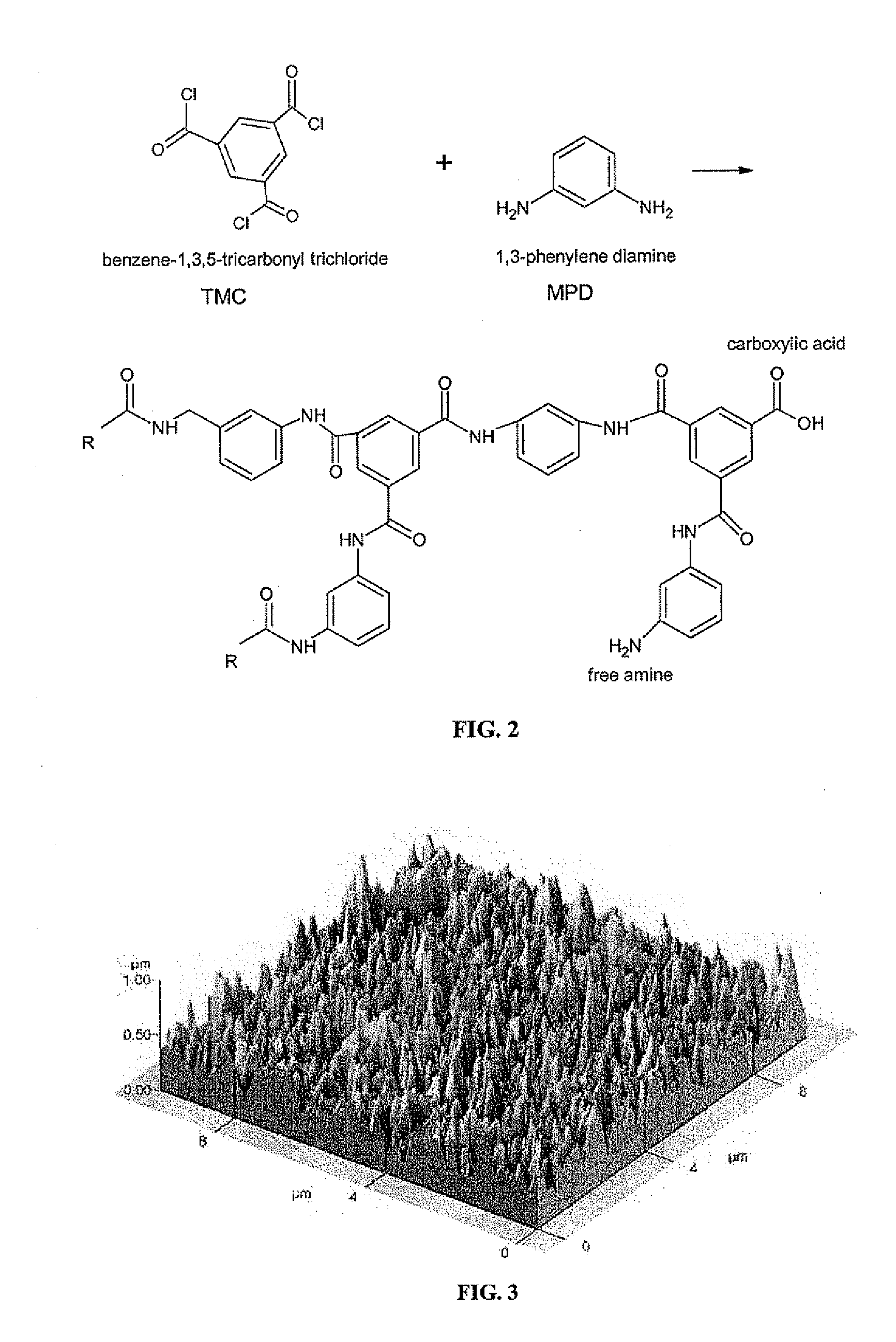Application of Rejection Enhancing Agents (REAs) that do not have Cloud Point Limitations on Desalination Membranes
a technology of desalination membrane and enhancing agent, applied in the direction of membranes, specific water treatment objectives, cleaning using liquids, etc., can solve the problems of reduced membrane life and higher operating costs, lack of chemical stability of oxidants, and high surface roughness
- Summary
- Abstract
- Description
- Claims
- Application Information
AI Technical Summary
Benefits of technology
Problems solved by technology
Method used
Image
Examples
examples
[0076]Two different types of membranes were tested to show the effectiveness of the REA compositions of the present invention. The following protocol was used during cross flow testing: 1) Membrane preparation; 2) Determination of initial membrane flux; 3) Chemical cleaning with low pH solution; 4) Chemical cleaning with high pH solution; 5) Membrane compaction / conditioning; 6) Determination of flux and salt rejection after chemical cleaning; 7) Coating with PVP or PVA and / or tannic acid by application of 5-30 mg / l PVP or PVA for 30 mins at 150 psi pressure, followed by good flushing followed by tannic acid application of 5-30 mg / L at 150 psi pressure, for 30 minutes; 8) Determination of flux after treatment; and 9) Determination of salt rejection / salt passage after treatment.
[0077]Rejection Enhancing Agents
[0078]Tannic acid was purchased from Aldrich and has a molecular weight of 1701.18 g / mol. Polyvinylpyrrolidone (PVP) was purchased from Aldrich in a powder form and with an avera...
PUM
 Login to View More
Login to View More Abstract
Description
Claims
Application Information
 Login to View More
Login to View More - R&D
- Intellectual Property
- Life Sciences
- Materials
- Tech Scout
- Unparalleled Data Quality
- Higher Quality Content
- 60% Fewer Hallucinations
Browse by: Latest US Patents, China's latest patents, Technical Efficacy Thesaurus, Application Domain, Technology Topic, Popular Technical Reports.
© 2025 PatSnap. All rights reserved.Legal|Privacy policy|Modern Slavery Act Transparency Statement|Sitemap|About US| Contact US: help@patsnap.com



